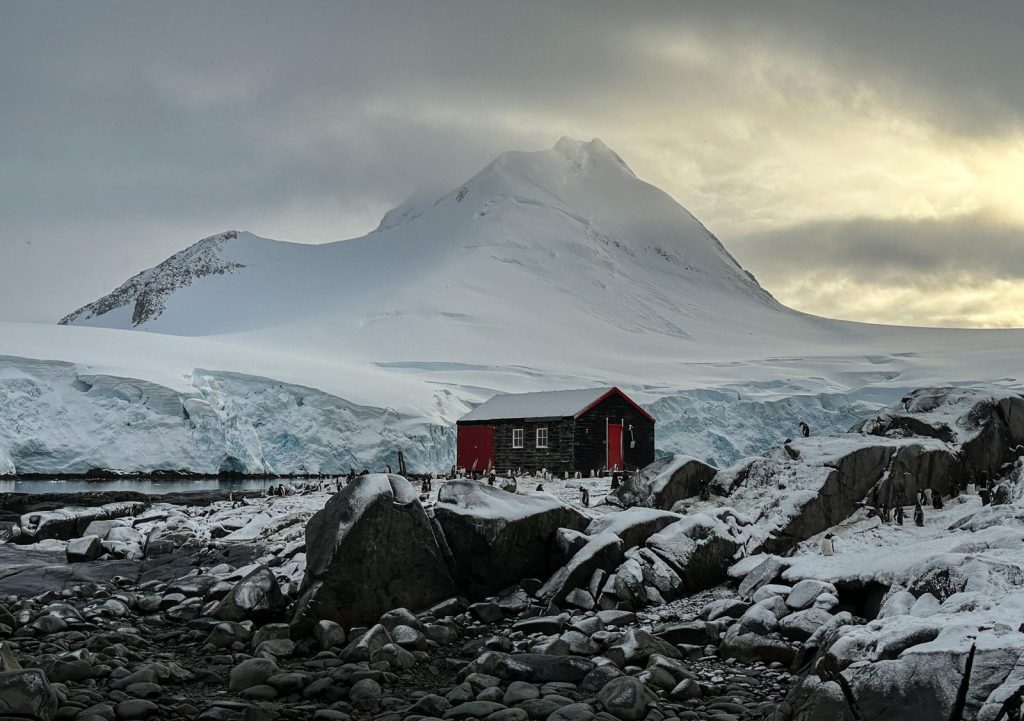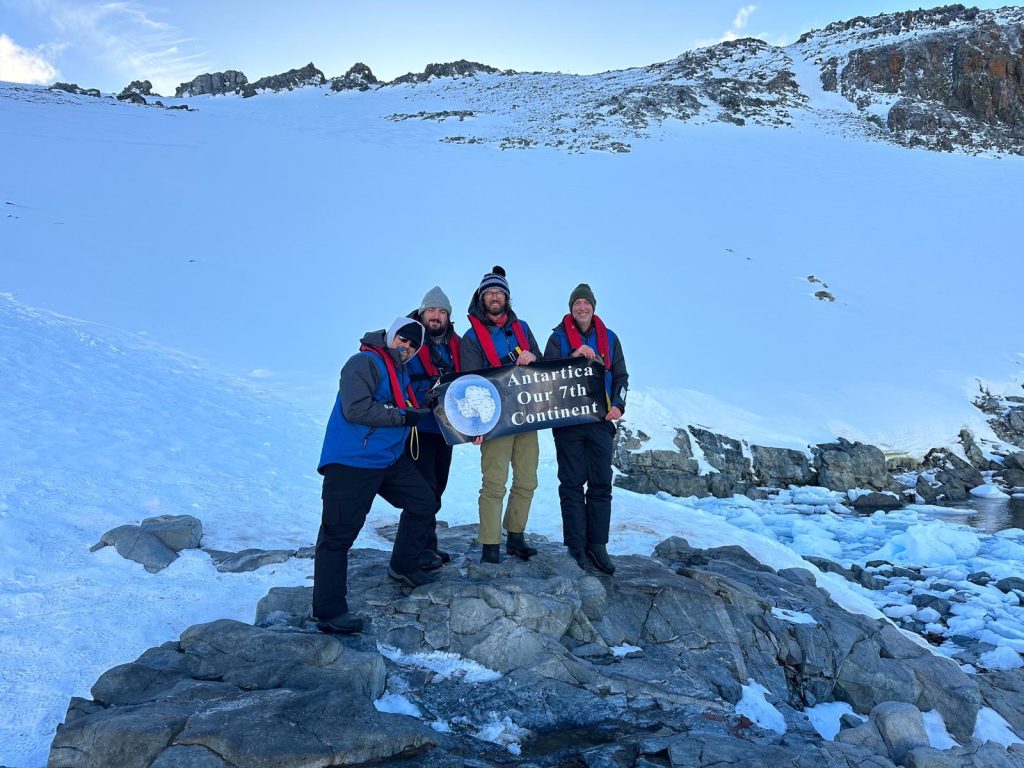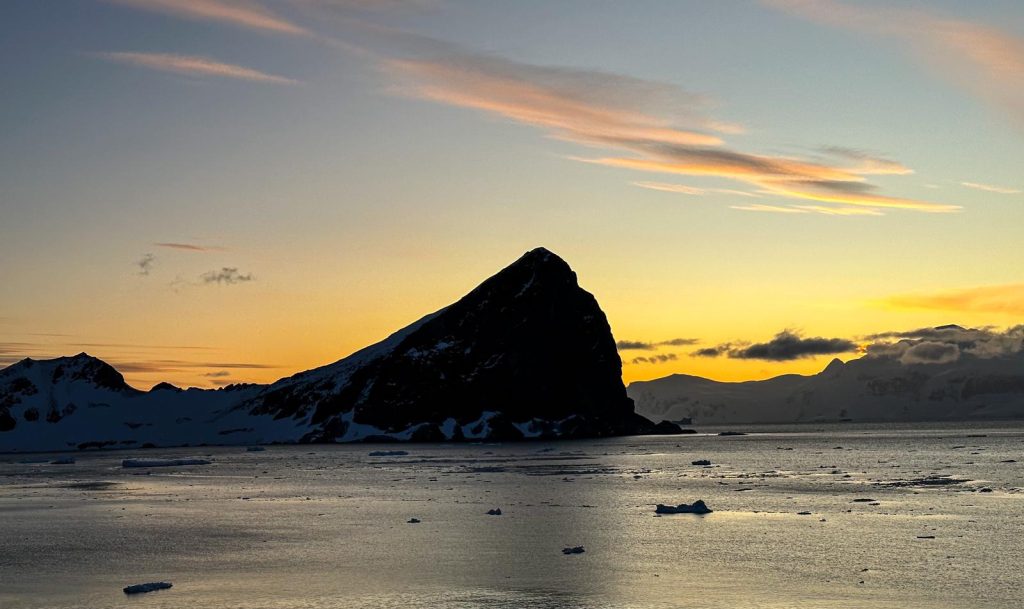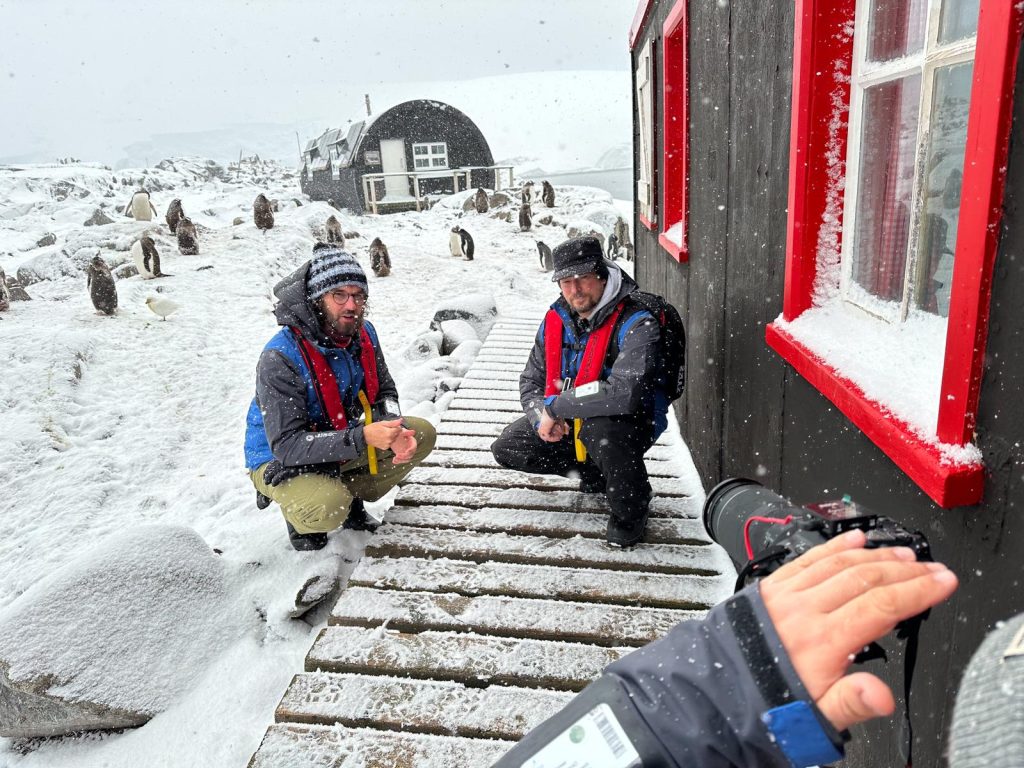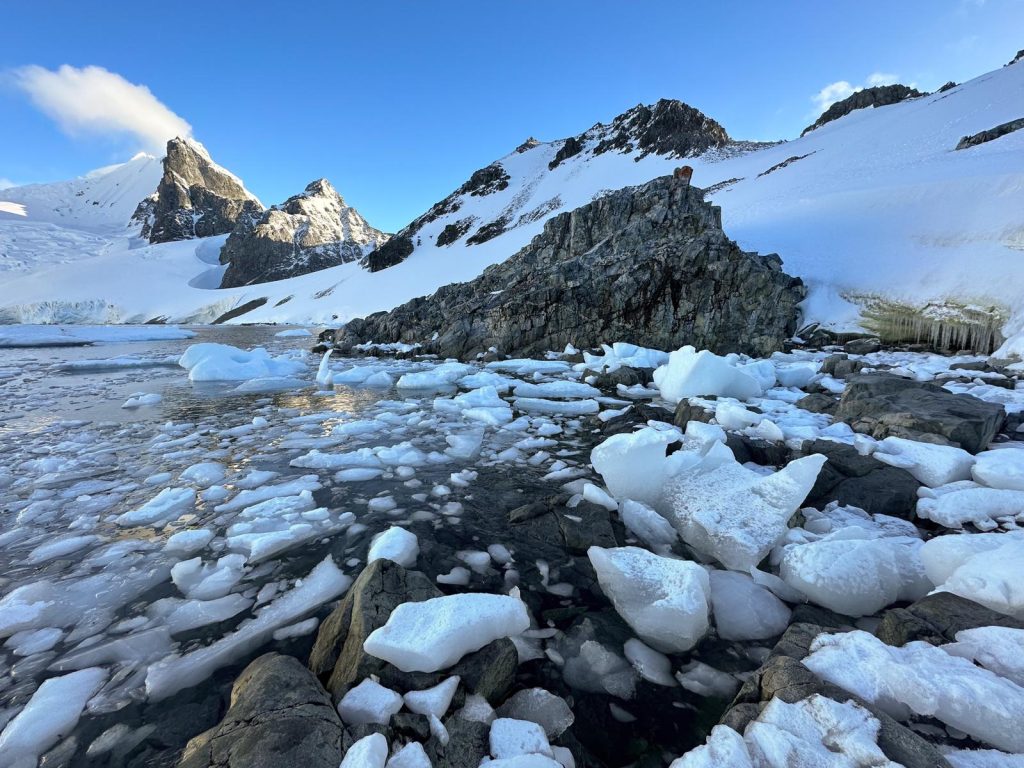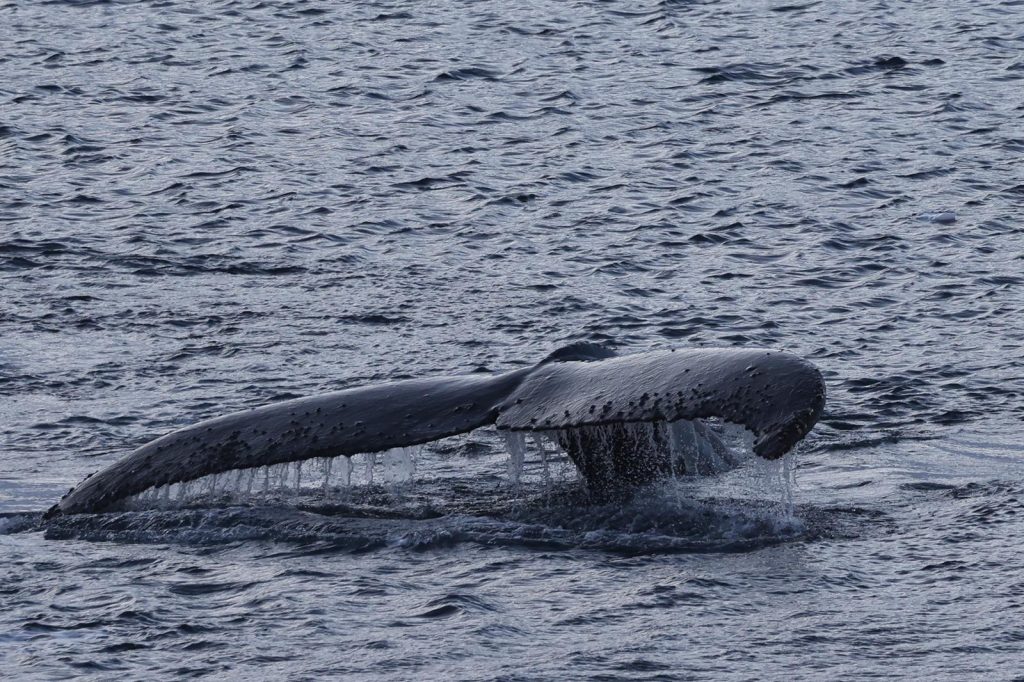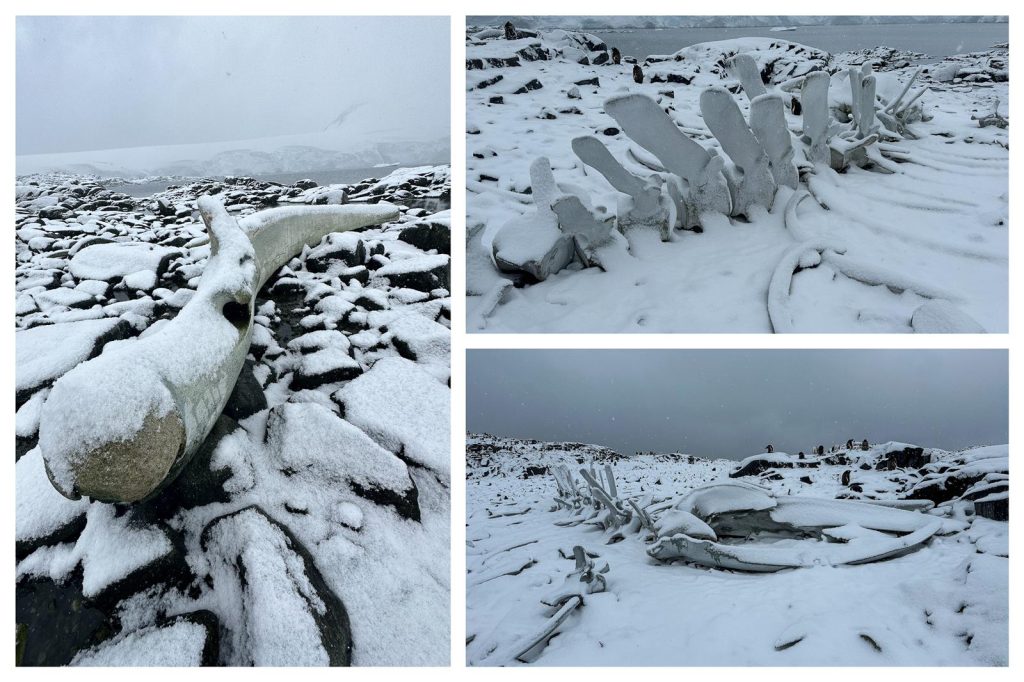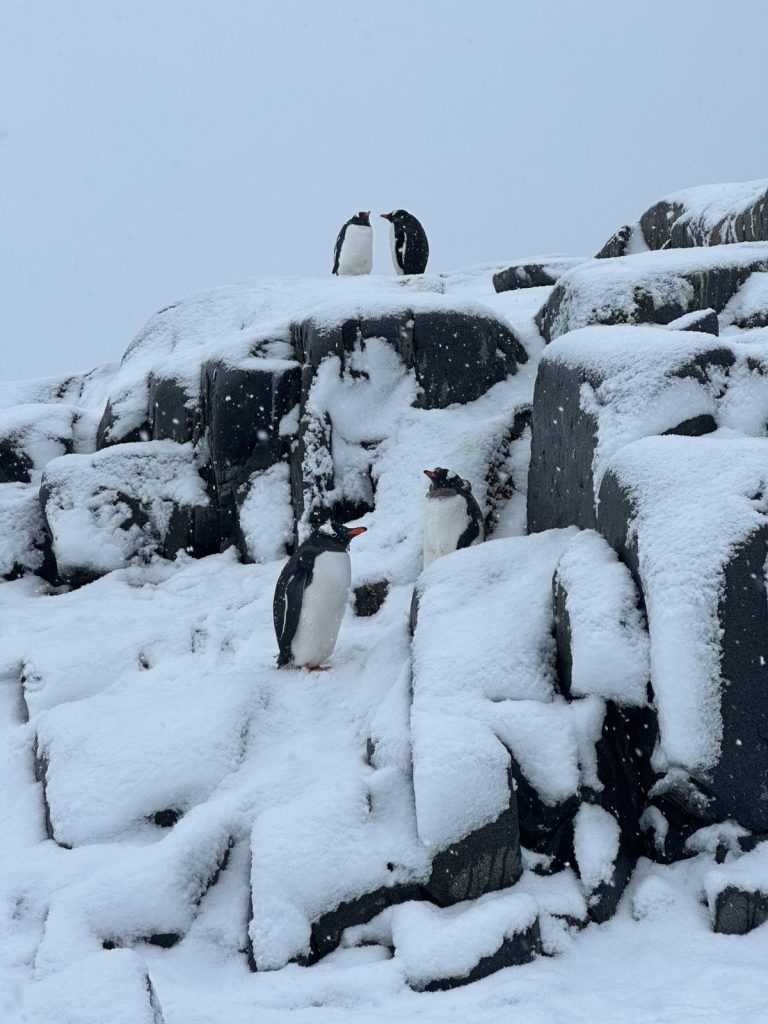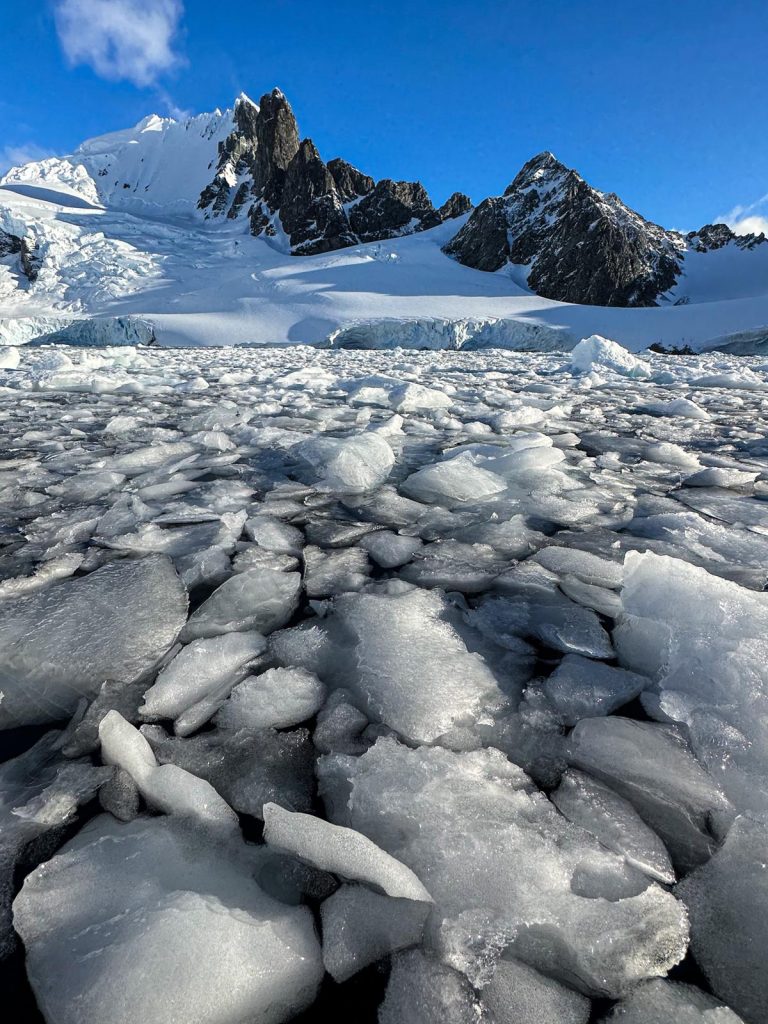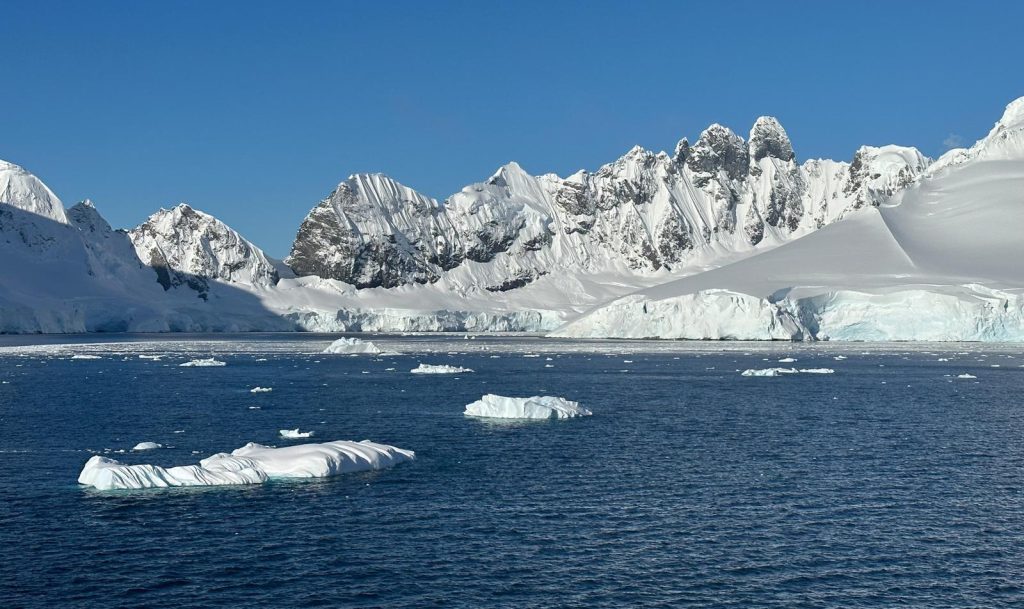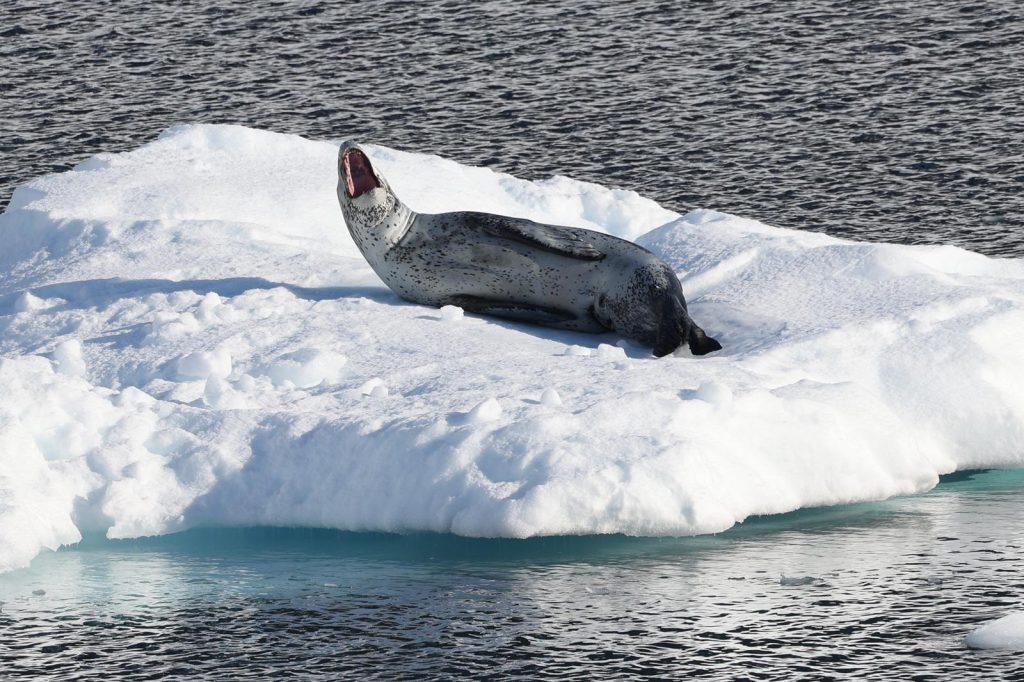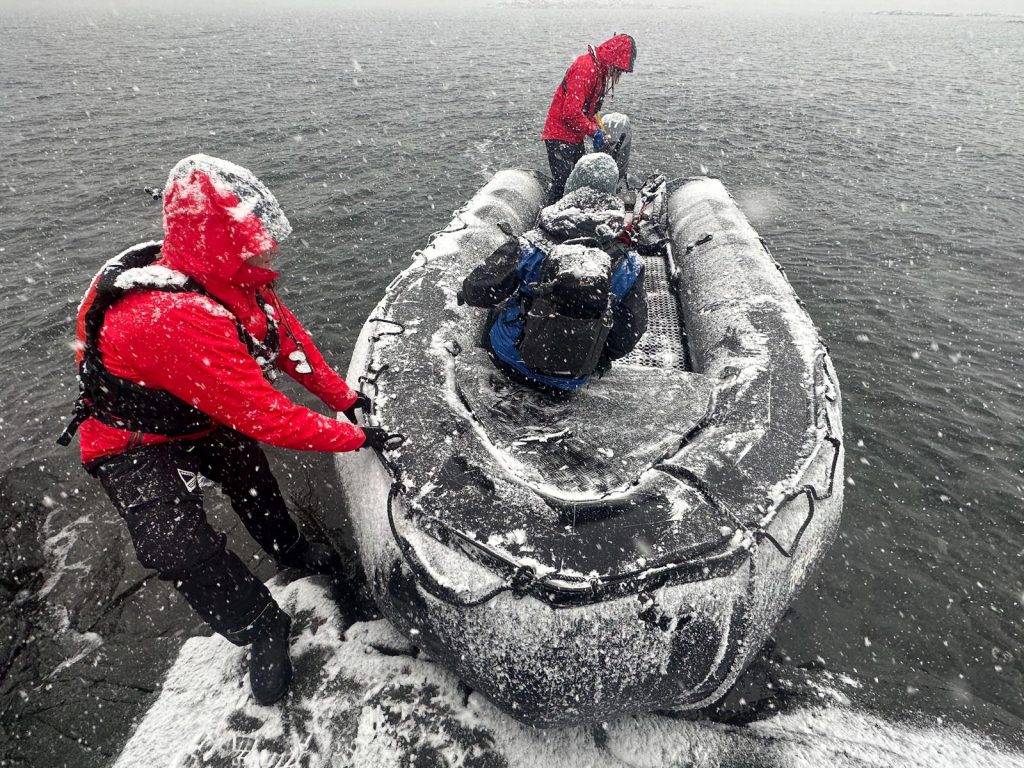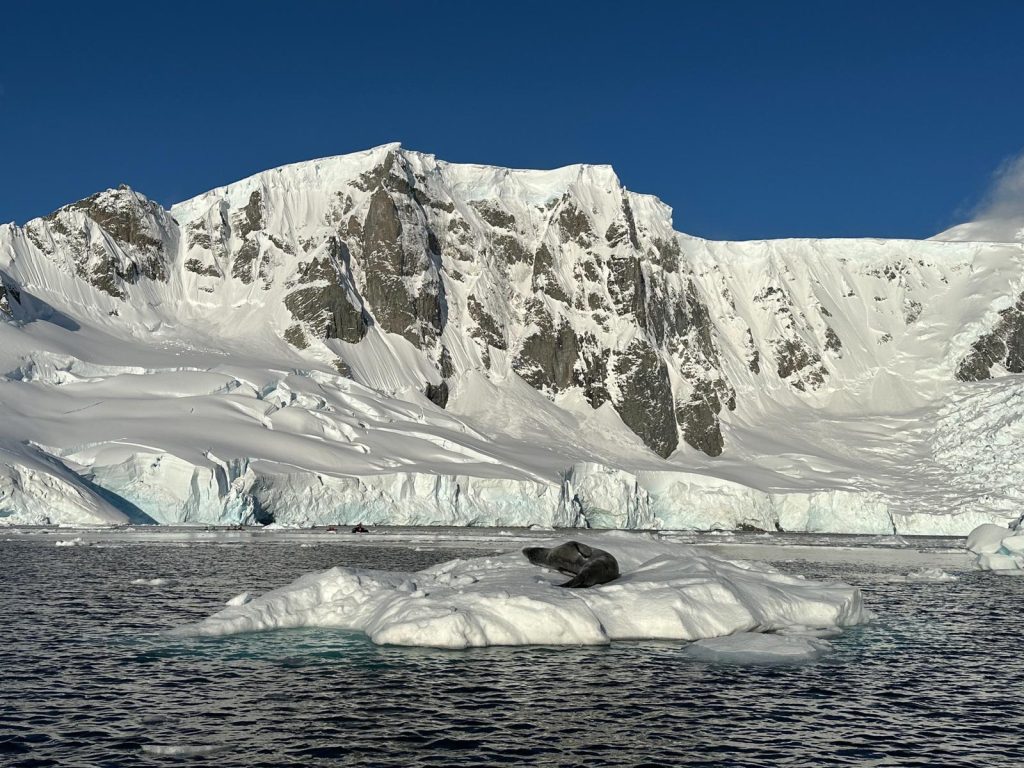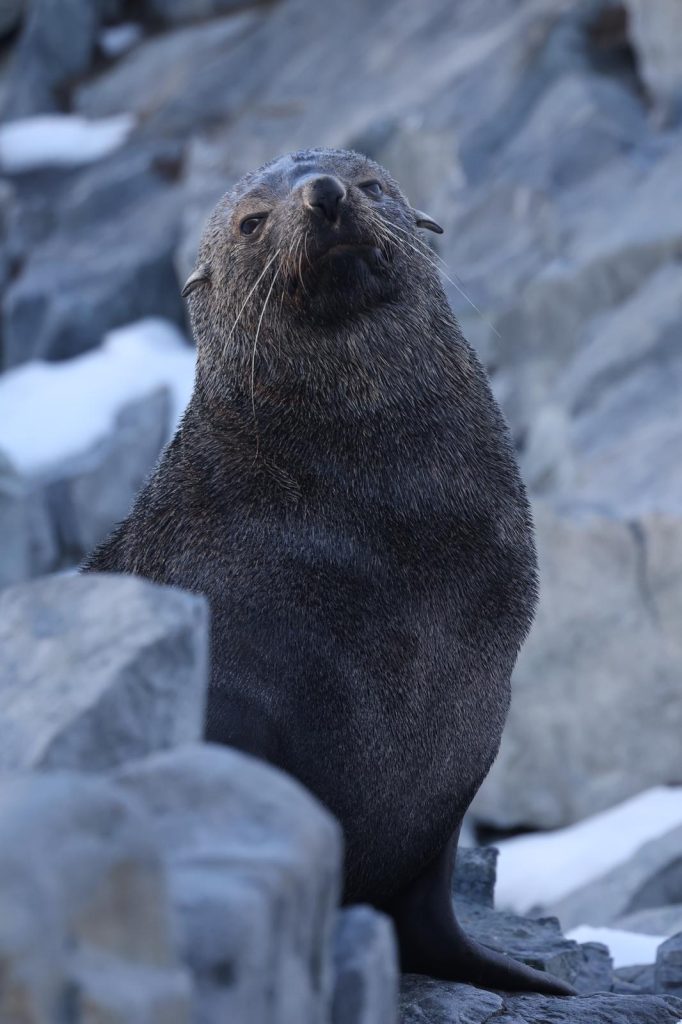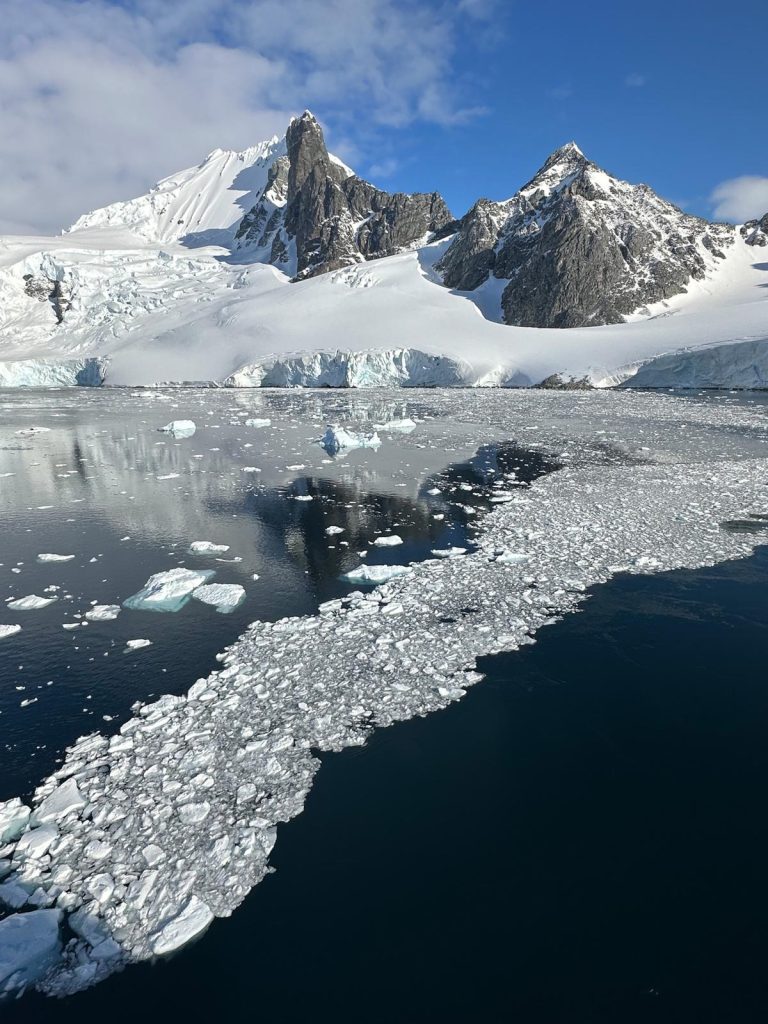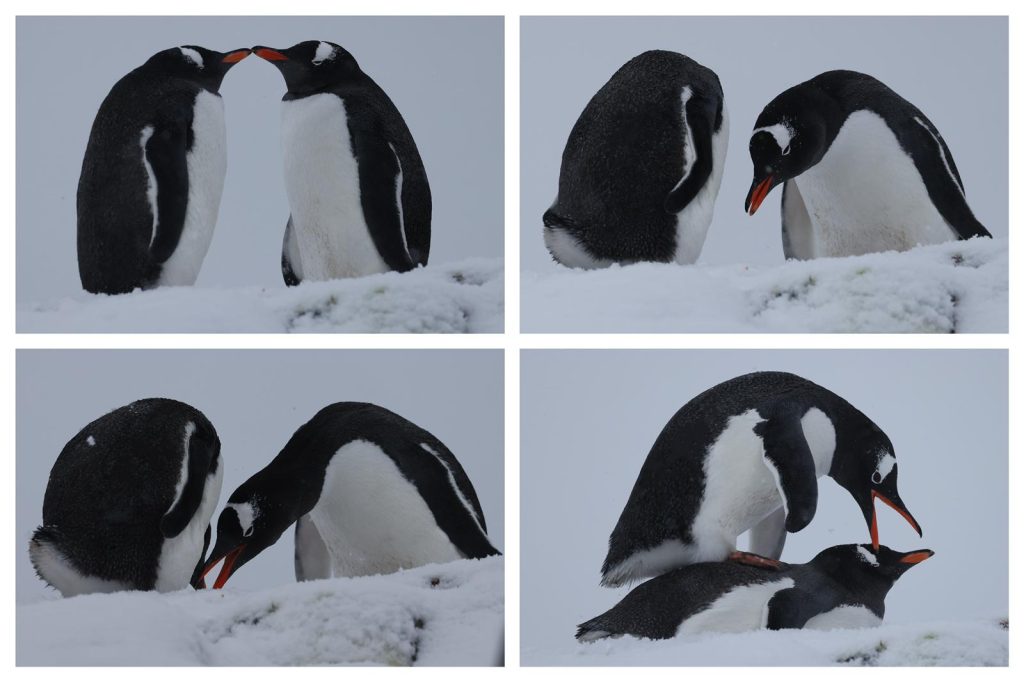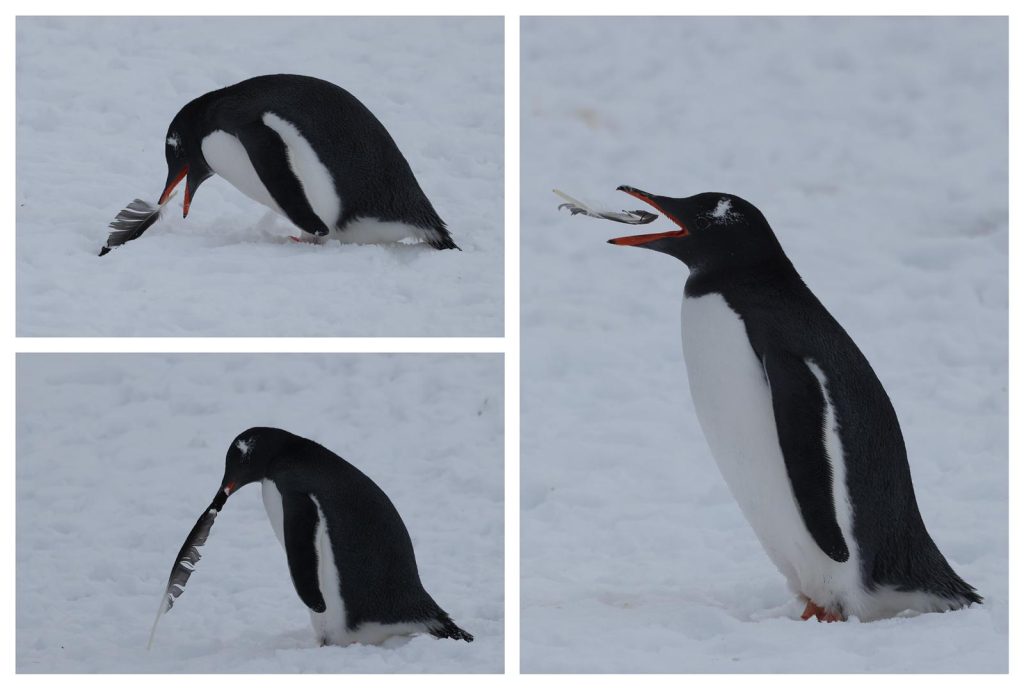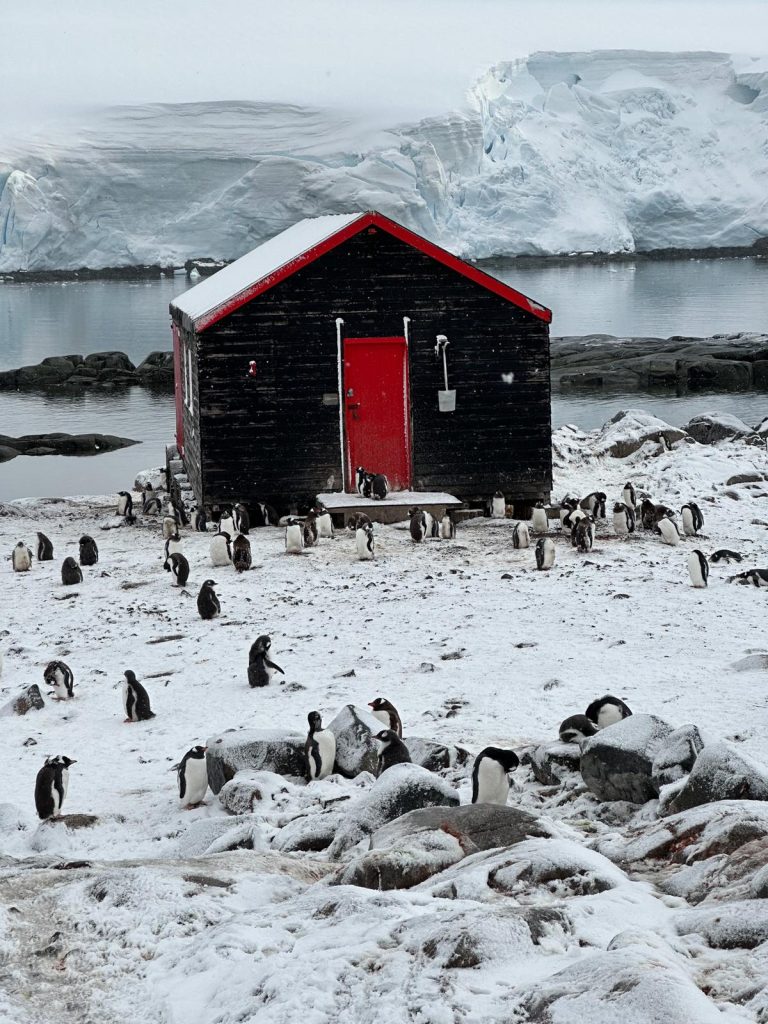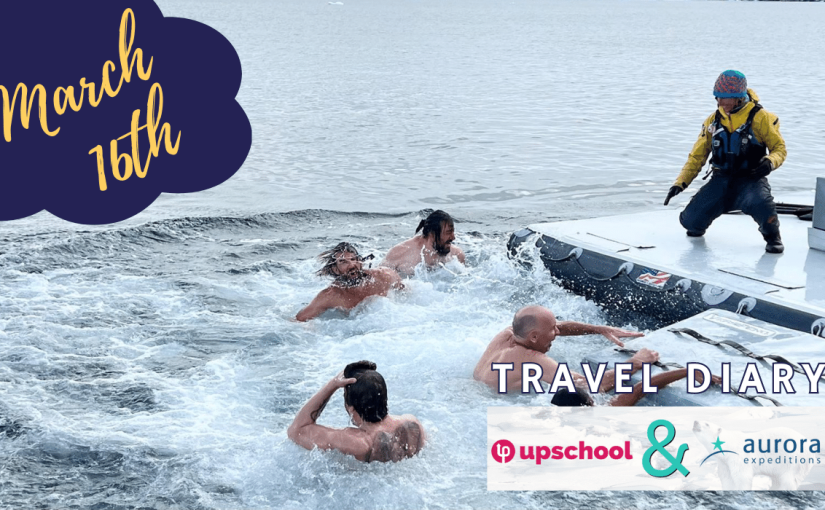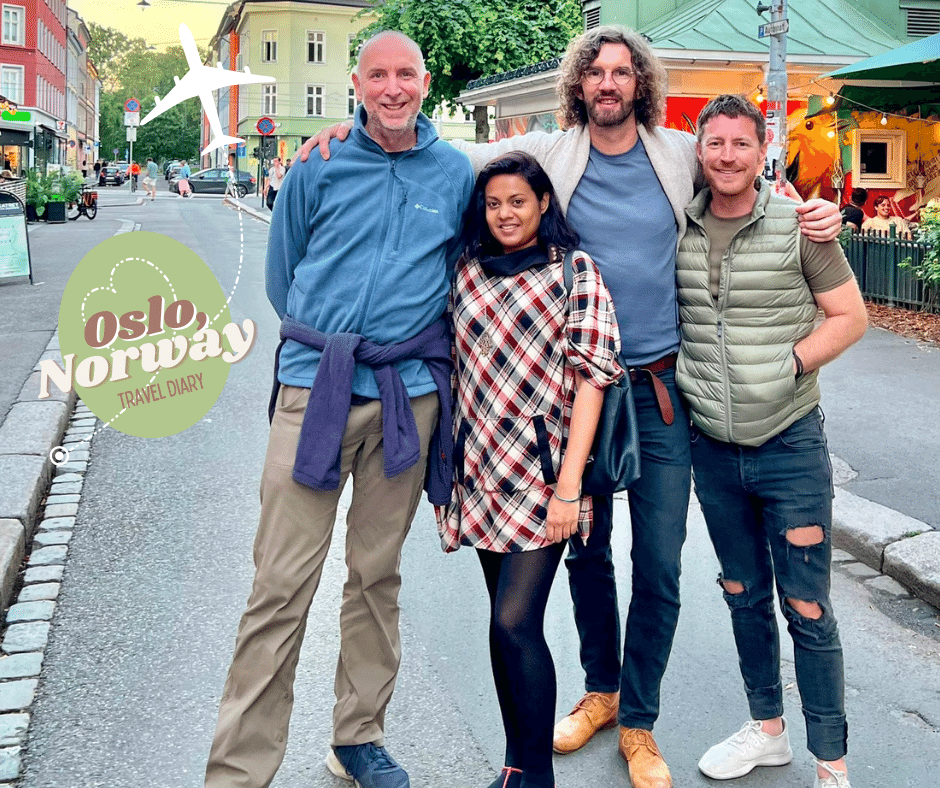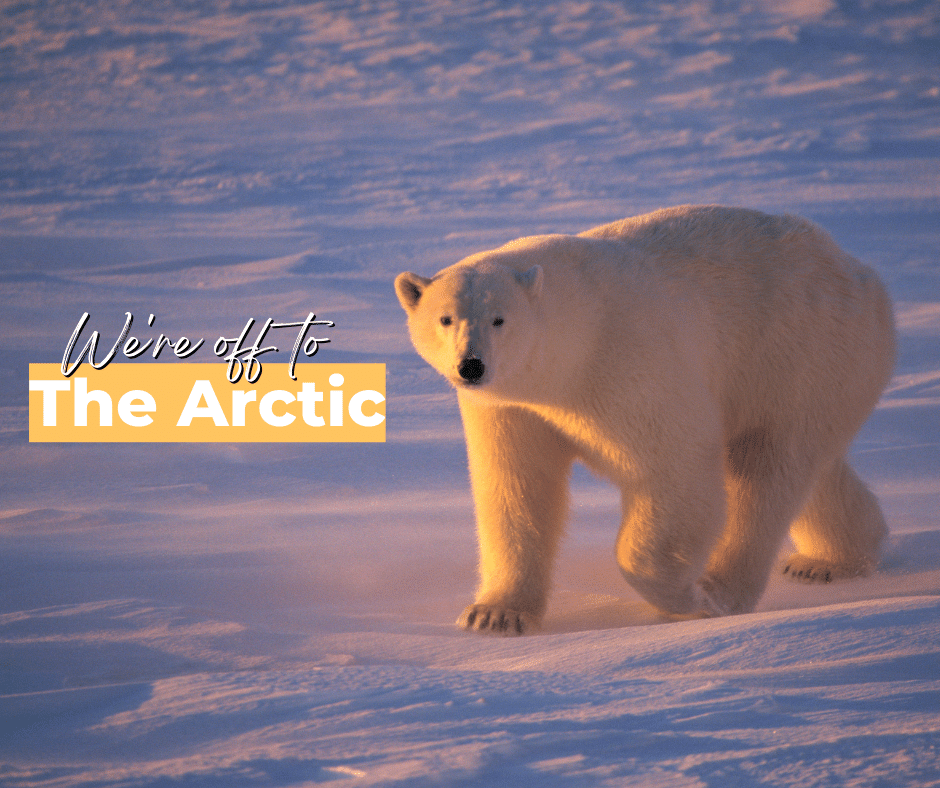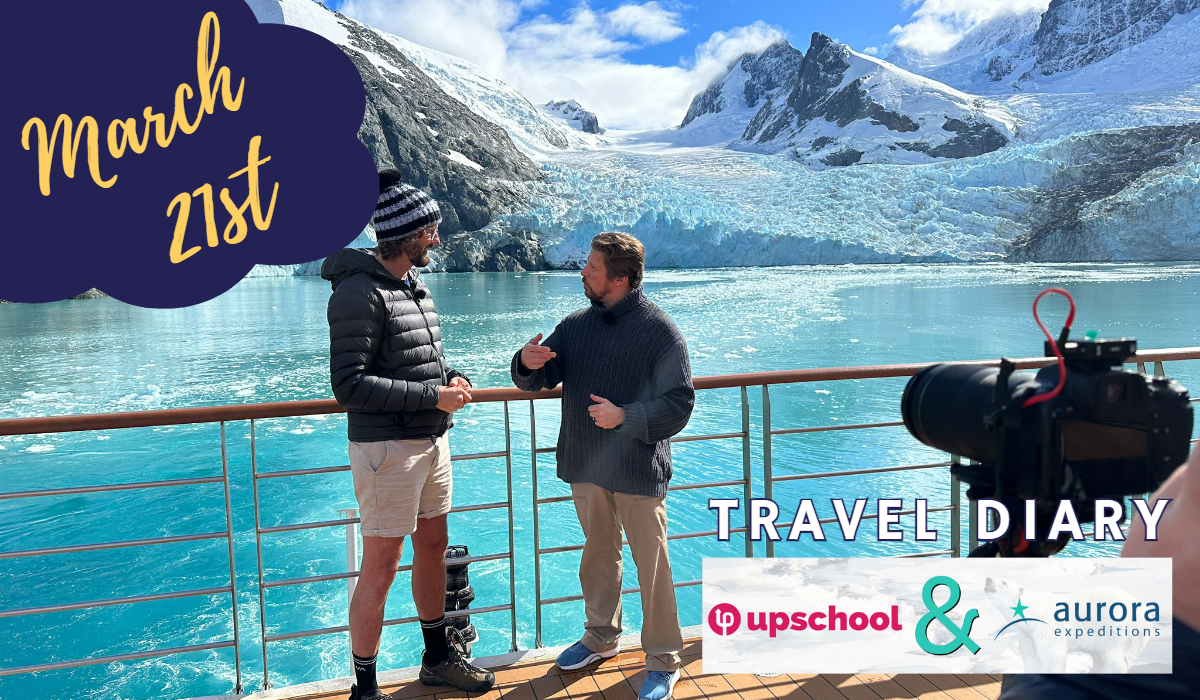Position at 0700 on 16th March
Latitude: 64°34’5” S
Longitude: 063°34’9” W
Course: 084°
Speed: 5.9 kts
Barometer: 1003hpa
Air temp: -1° C
Sea temp: 1° C
Wind Speed: LT AIR
Penguin count: countless!
Whale count: also countless!!
Each day we awaken early to a new adventure awaiting us and a wonder within us, as we await the day’s activities. Today, planned for us, is a visit to Port Lockroy, Jougla Point and Orne Harbour.
First up, we head to the mudroom to suit up for our first outing on the Zodiac boats to cruise around the calm waters of Port Lockroy. Within the port is Goudier Island, and we make a landing there to check out the colony of penguins that live there, and some buildings and structures known as Base A.
Base A was set up in 1944 by the British, as part of an operation to survey German activities on the peninsula. Scientific staff took over the base in 1948, until 1962 when it was decommissioned and maintained as a museum, operated by the Antarctic Heritage Trust.
On Goudier Island is also Bransfield House, one of the Base A buildings, filled with relics from times past – including old food stores, ancient sealer memorabilia & paintings of early 20th century explorers.
Outside, with the backdrop of the buildings, the Gentoo penguin colony pottered around – the perfect backdrop for our next Young Art USA recording. Matt Iuliano directed Gavin McCormack and Jordan C Brun into position to begin recording as Graeme Myburgh snapped pictures from the sidelines. The penguins in the background were very cooperative in demonstrating the techniques we were attempting to convey through art – how to create caricatures from the animals around us, that they will then incorporate into later lessons on fictionalising these characters into stories. We also learned about how baby penguins shed their feathers before entering the ocean for the first time.
A little further around the corner, past the penguins, we ran across juvenile blue whale skeleton bones – remnants of the 1900s whaling past of the area, when whalers used to haul the whales onto the land to strip them of their blubber, which was used as oil for lanterns, grease for machinery, and even wax for candles. Bia, the marine biologist on board with Aurora Expeditions, showed us the eye cavity, and we filmed a lesson on the history of whaling.
And now… the time has finally arrived… it’s the polar plunge!! All through the morning, we had been buzzing with excitement and anticipation. Would it be colder than the Arctic waters of July 2022?! Yesterday we passed through many a cloud, the snow and hail softly falling on the decks, picking up with the wind. But today we’ve got beautiful, clear skies, the sun occasionally peeking through the clouds.
Over the tannoy, we get the call. Polar plunge time. We rush to ‘suit up’ in our swimwear and head down to the lower deck. Team Frosty Five cautiously step onto the mat and approach the edge, where the water laps, lining up to take the plunge together. Above us, from the sidelines of the ship, we’re cheered on, camera’s at the ready. We countdown…three…two…one…JUMP!
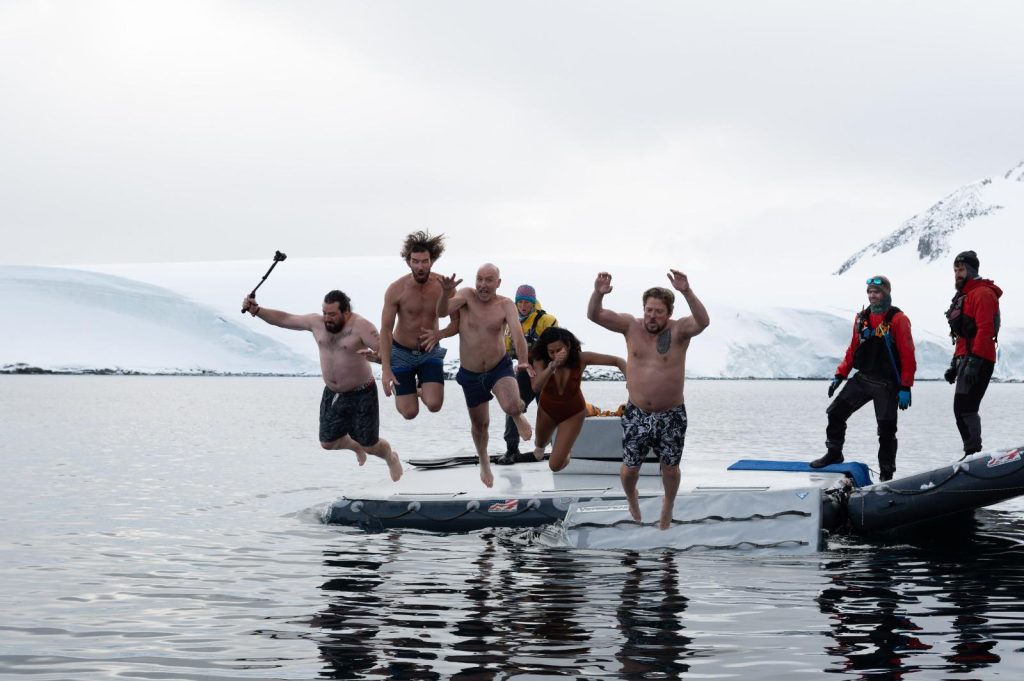
Photo by Renato Granieri
It’s all over in a matter of seconds and we’re scrambling back onto the mat! The shock of the cold doesn’t really register till we’re half-running towards the sauna, to thaw out our frozen toes! Antarctic plunge, done and dusted!
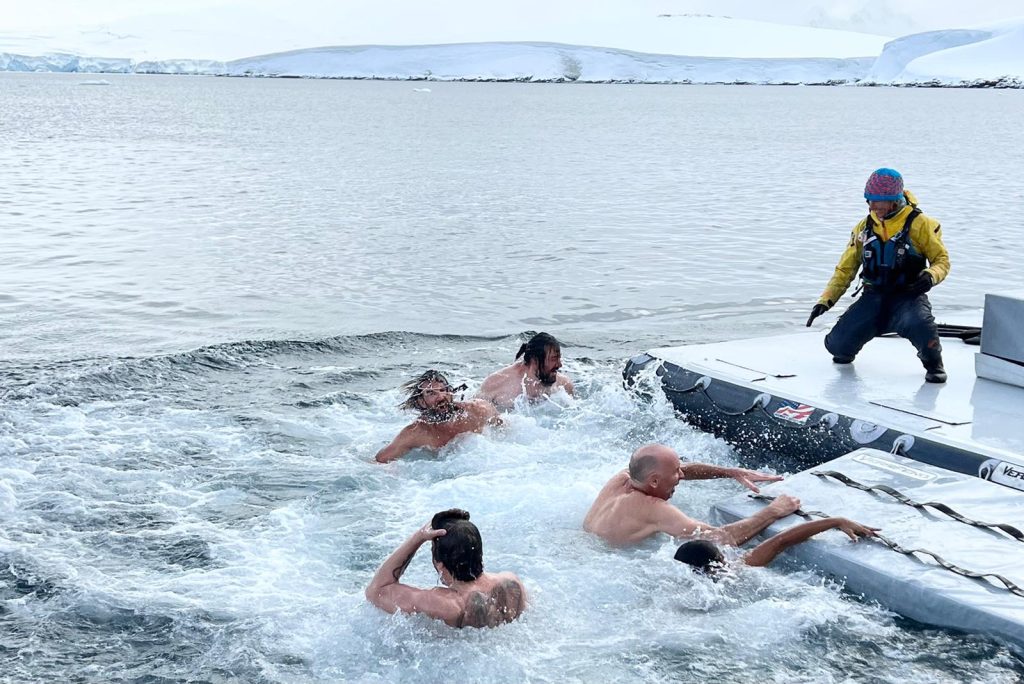
The afternoon’s activity took us to Orne Harbour, where we were given the opportunity to make a real continental landing! We approached the icy continent and as the Zodiac pulled up, the Upschool team felt an extreme moment of elation as we realised how fortunate we were to have this opportunity to deliver lessons across the world from one of the most remote locations on the planet. We stepped out onto the land – one of only about 400,000 people to do so.
In Orne Harbour cruising around we did a lesson on how warm and cool colours are incorporated in art, under a cliff filled with shags – the birds that help guide sailors towards land, because they are never more than 50km from shore. We also recorded a lesson with Jeff, the historian, on bubble net feeding techniques of humpback whales.
When we got back to the ship, we were greeted with the smell of a delicious BBQ, enticing us up onto the level 8 deck, where we enjoyed a beautiful evening of food, fun and festivities. Beautiful moments surrounded us as we enjoyed our BBQ, with humpback whales joining us alongside the ship to enjoy their own feed; we witnessed the beauty and magic of the bubble net feeding technique, that we had just learned from Jeff! It was such an amazing sight to behold and we can hardly wait to see what tomorrow will bring.
See you tomorrow and thanks for reading!
Love from the Frosty Five!
Tanya, Gavin, Graeme, Jordan & Matt
